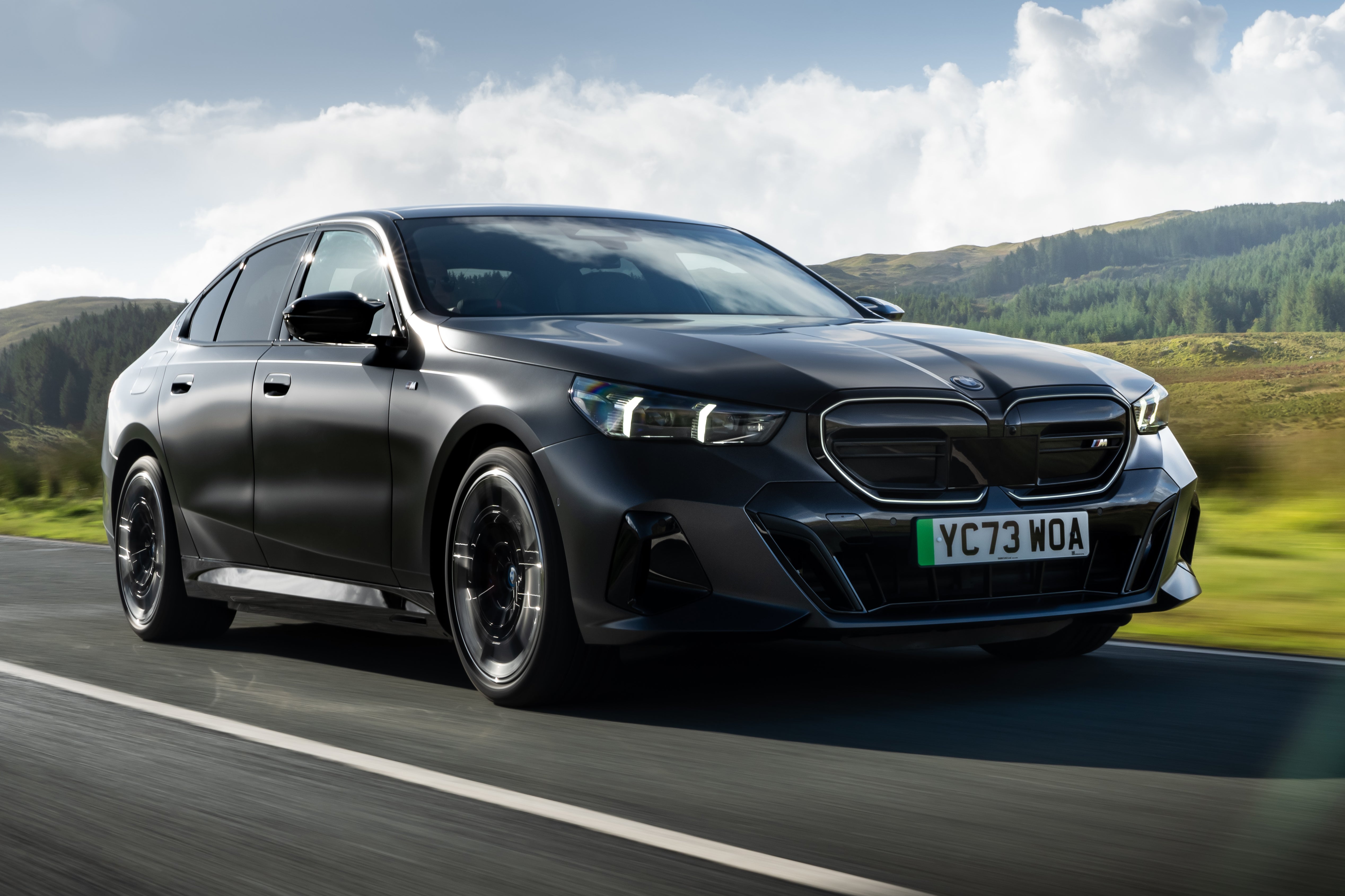BMW i5 Review 2025: Price, specs & boot space
Written by Antony Ingram
Quick overview
Pros
- Fantastic cabin design and comfort
- Fast and agile performance
- Useful range
Cons
- Not much steering feedback
- Infotainment takes some learning
- Boot is smaller than some
Overall verdict on the BMW i5
"BMW is serious about electric cars, and while models like the iX, XM and i7 have given us an idea of the brand’s abilities, the BMW i5, an electric 5 Series, shows BMW can get its core models right, too. It’s an impressive car that should appeal to both existing 5 Series owners and those new to the brand."
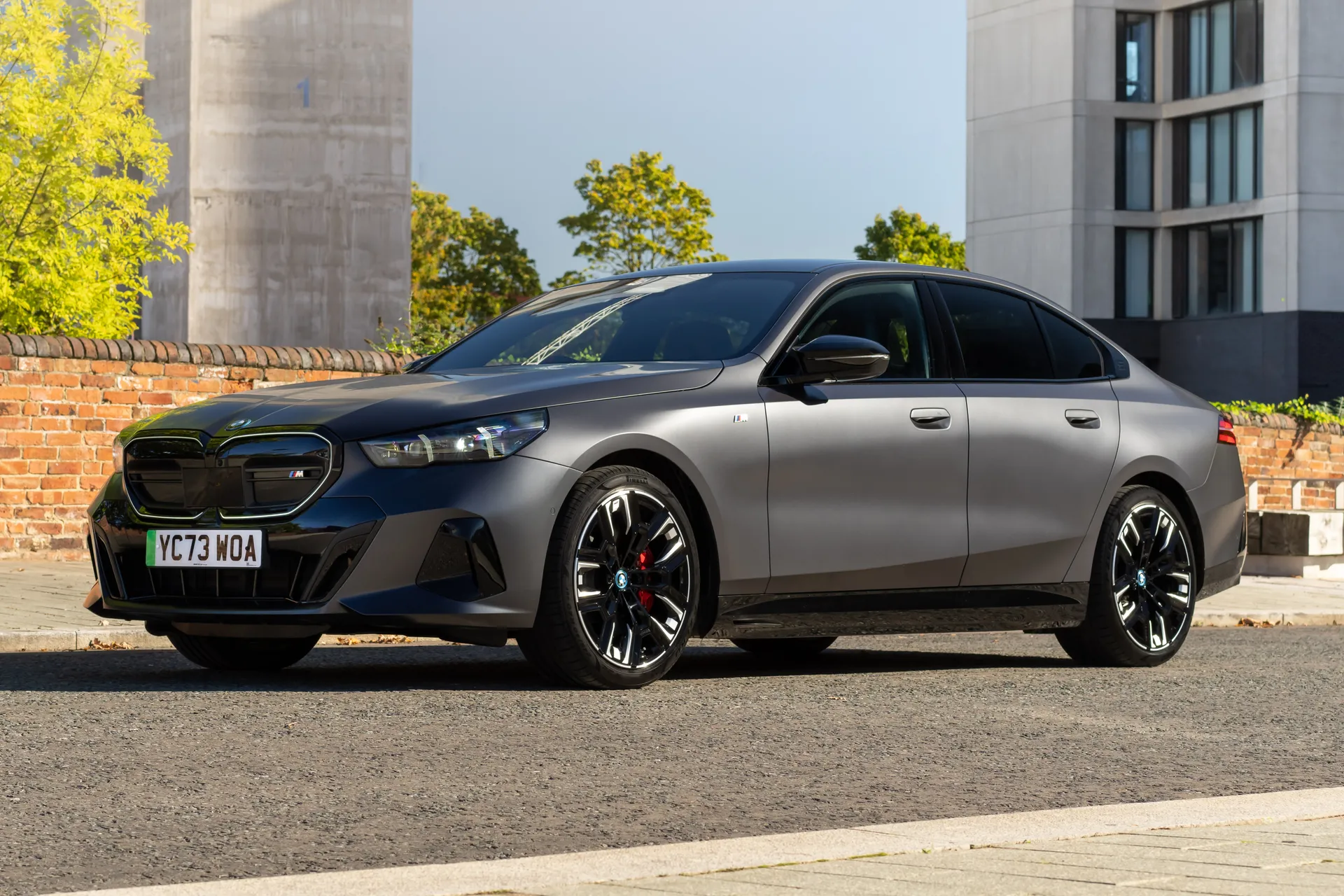
The BMW 5 Series lineage stretches back more than half a century, to 1972, but the i5 is the first time the model has gone electric. Yes, combustion models are still offered ,but the i5 feels like the best illustration of where the 5 Series will head in the future. And in true 5 Series tradition, it’s strong in almost every area, as you'll find out in our BMW i5 review.
The i5 is a big car, at more than five metres long, and a heavy one too at over 2.2 tonnes, but its two current variants, the eDrive40 and the M60 xDrive, make up for their size and weight with ample power (from 340PS to 601PS), plenty of grip, and impressive agility. The car is refined, too, with little road-, wind- or drivetrain noise, and it even rides well despite most versions in the UK being offered in M Sport trims, with stiffer suspension and larger wheels than the base-level Sport Edition model.
Inside, meanwhile, the i5 is like a scaled-down BMW i7. It looks and feels fantastic, and there’s no shortage of space front or rear, while anyone concerned that the boot is a little smaller than in the previous 5 Series may be placated by learning that there’s an i5 Touring estate on the way in 2024.
A long range and fast charging mean longer distances shouldn’t be an issue, and naturally, the i5 is full to the brim with BMW’s latest technological features. It doesn’t come cheap, with prices starting at more than £67,000, but this is a car with Porsche Taycan-style performance with better range and more space for people and things. That makes the i5 very easy to recommend.
Looking for a used car for sale? We've got 100s of BMW Approved Used Cars for Sale for you to choose from, including a wide range of BMW i5 cars for sale.
Is the BMW i5 right for you?
Provided cost isn’t a barrier and you’ve got somewhere to charge it, then the BMW i5 makes a very strong case for itself if you’re looking for a swift and comfortable executive car. It retains all the qualities that made previous BMW 5 Series among the best cars in its class, and adds the strengths of a well-developed electric car.
What’s the best BMW i5 model/engine to choose?
The BMW i5 eDrive40 is already such a complete product, it’s difficult to imagine wanting anything more. It doesn’t have the truly eye-opening acceleration of the xDrive M60, but it’s still quick enough to thrill, and the M60’s hefty outlay - from around £98,000 compared to around £67,000 for the eDrive40 - doesn’t buy you any more refinement, nor range. In terms of trim level, the entry-level Sport Edition trim provides plenty, although the more popular M Sport model does admittedly look a little sharper.
What other cars are similar to the BMW i5?
Closest in concept to the BMW i5 is the Mercedes-Benz EQE, which acts as Mercedes’ de facto electric E-Class. Its bar-of-soap look is probably even more of an acquired taste than the BMW’s angular styling, and while the AMG 53 version is quicker than the M60, it’s also more expensive. The EQE offers a longer range on paper, while the BMW counters with better performance at equivalent pricing.
The Audi e-tron GT and Porsche Taycan are also worth considering, though technology has moved on so quickly that neither stands out for its abilities as much as it did at launch. There’s always the Tesla Model S, too, but Tesla is now only offering it in left-hand-drive form in the UK, and it’s less of a driver’s car than the BMW.
Comfort and design: BMW i5 interior
"BMW has adopted the look and feel of its opulent 7-series and i7 for the latest 5-series and i5, and it makes for a genuinely special driving environment."
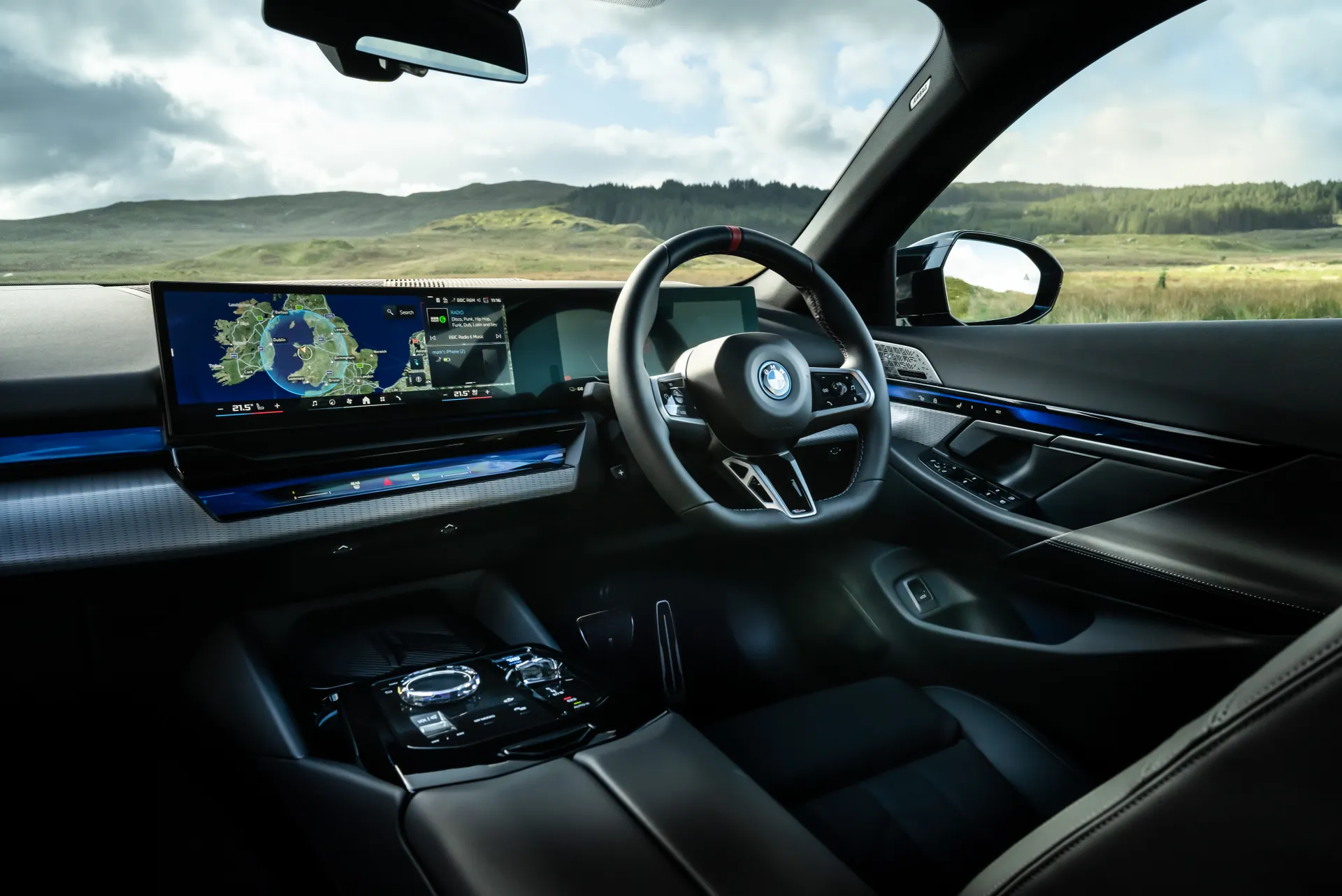
The seats feel straight out of the larger car and are outstandingly comfortable, although the sportier i5 does place you lower than its grander sibling. There’s plenty of adjustment in the seat and steering wheel, and with adjustable bolsters, it has a sporty feel, too.
You sit behind a large, curved screen similar to that in many current BMWs. Here it incorporates a 12.3-inch driver display and a 14.9-inch touchscreen, with further controls including the rotating, crystalline iDrive dial on the broad centre console. It’s ergonomically sound and certainly looks and feels the part.
BMW’s Veganza artificial leather feels just as good as the real stuff, too, with a soft and high-quality finish. Back-seat passengers have it good, too; the long wheelbase of the car means plenty of rear legroom, and taller folks shouldn’t struggle for headroom, either.
Quality and finish
This is a real highlight of the BMW i5. BMW’s recent models have been class-leading in this area and the i5 is no exception. The interior has the warm, inviting nature you typically get from Mercedes, with the kind of fit and finish accuracy and solidity we’ve come to expect from Audi.
It’s similarly impressive on the outside, too, with one curious exception: reflections in the flat sides betray how the perimeter of each door seems to curve in slightly before the shutline. Audi definitely still has the edge on precision panelwork, it seems.
Infotainment: Touchscreen, USB, nav and stereo in the BMW i5
As alluded to further up, all BMW i5s get a large, curved display screen that incorporates both a 12.3-inch display ahead of the driver, and a wide 14.9-inch touchscreen for the infotainment. It looks fantastic, as these wide screens often do, avoiding any “floating iPad” accusations, but it also works well, and comes bundled with Apple CarPlay and Android Auto integration as standard.
It will certainly take an owner a little time to fully decipher everything. Air conditioning controls have permanent shortcuts at the lower edge of the screen and they’re simple enough to deal with, and you can pull down a shortcut menu from the top for commonly-used features. Naturally, you can also spin the iDrive dial on the centre console, with its own shortcut buttons positioned nearby.
There’s just a lot to go through, so it’d be worth experimenting with at a standstill first. If you’re parked, you can also watch YouTube, if you’ve bought the right data package, and the screen’s excellent resolution means it should look pretty good, too. For the driver, the i5’s large head-up display is also top-notch for clarity.
Space and practicality: BMW i5 boot space
Whether in the front or back, the BMW i5 is a spacious car. The 5 Series hasn’t been a cramped car for quite a while now, but in expanding the latest car in every direction (the i5 is 5060mm long, 1900mm wide without mirrors, and 1515mm tall), BMW has certainly found more rear legroom, and the dashboard layout seems to make the cabin feel more inviting and airy, even if the actual driving environment is no bigger than before.
Where the i5 loses a little to its predecessor, albeit not by much, is in boot space. The combustion-powered 5 Series gets a 520-litre boot, 10 litres down on the previous car (no doubt a result of that sloping design at the rear), but the i5’s big battery pack reduces that further to 490 litres. Still big, then, but if you’re concerned about losing space for whatever it is you carry, an i5 Touring estate is also available.
Handling and ride quality: What is the BMW i5 like to drive?
"The BMW 5-series has always struck an impressive balance between ride and handling, and with an all-new platform and electric power, that hasn’t changed here. With one or two exceptions, it’s very impressive in every area you’d expect of an executive saloon, with a sporty and dynamic focus."
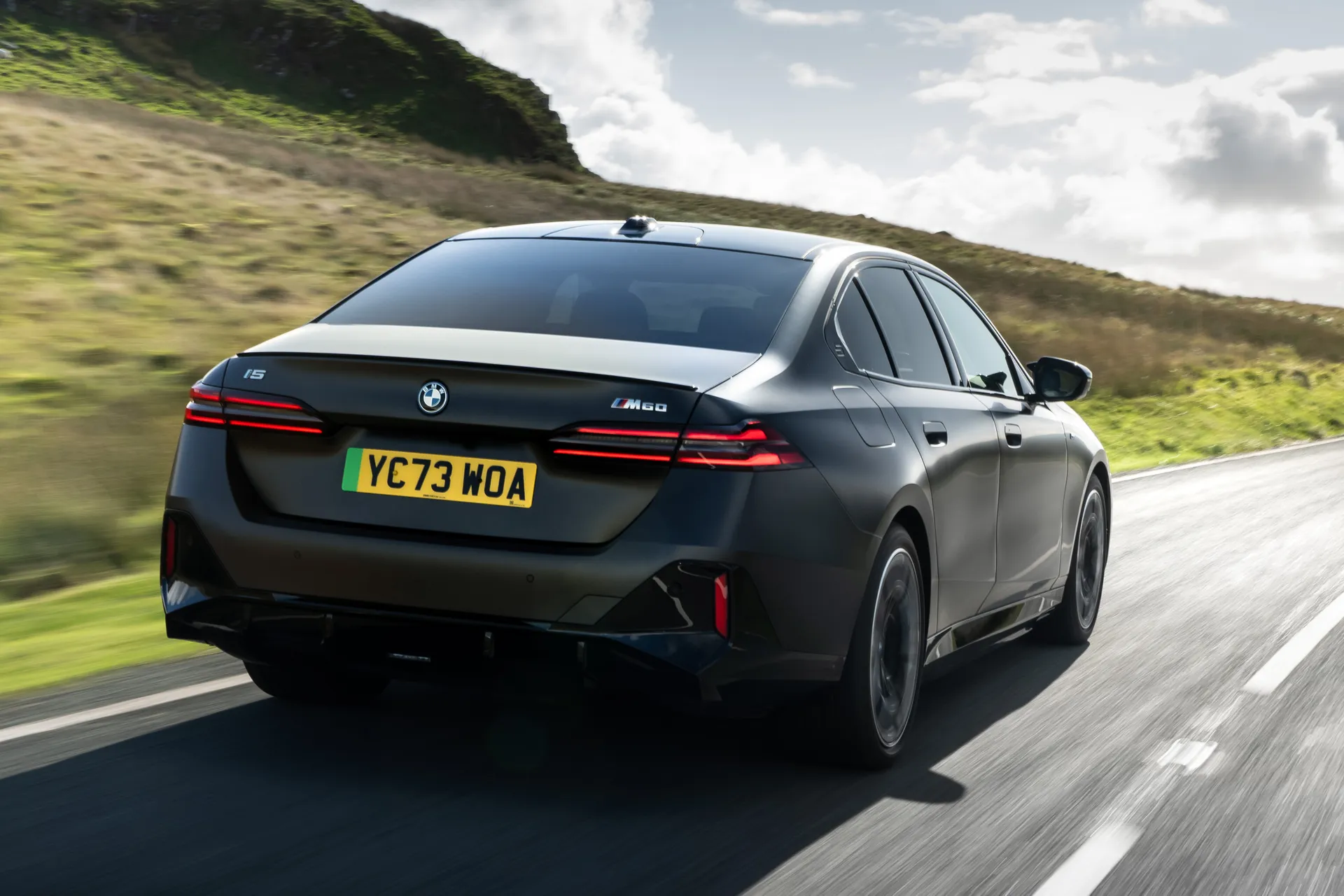
One of those exceptions concerns handling, the other ride quality. In most handling terms the i5 is excellent. It steers positively and doesn’t seem hampered by its considerable weight: this is a car that tips the scales at well over two tonnes. There’s enough grip to satisfy all but racing drivers and bank robbers, and the car feels impressively agile. That's helped by strong body control, which means even in fairly quick changes of direction, like scooting into and out of a roundabout, the i5 keeps its weight in check.
The downside is you get very little in the way of information at your fingertips. The steering is responsive, accurate, and does weight up gently in corners, but there’s not much sense of what’s actually going on. It’s just as well you can pretty much always trust the i5 to hang onto your chosen line.
The ride, too, is reasonably well judged. Most UK models come with M Sport suspension, but even on 20-inch wheels, the comfort levels you experience are decent. The ride is taut but not uncomfortable (something helped by the softness of the seats) and the car rides most small bumps well, while feeling controlled over undulations and through dips.
The exception is that it does occasionally thump through particularly rough sections of beaten up Tarmac, something we’d expect would improve in models with a softer suspension setup. Initially, such versions weren't available, but a Sport Edition trim was introduced midway through 2024 that brought exactly that. We haven't tried it yet, so we can't say for sure if our expectations are accurate, but we'll let you know as soon as we drive it what the effect is.
What motors and batteries are available in the BMW i5?
BMW keeps things simple with the i5 lineup. There’s a single 83.9kWh battery pack, with 81.2kWh of usable capacity. There’s a little more variety in the motors. Both the eDrive40 and the M60 xDrive get a 340PS electric motor on the rear axle, but the M60 adds a 261PS motor for the front wheels, too. That gets you a combined 601PS in total, and of course, all-wheel drive.
The single-motor eDrive40 finds excellent traction (helped by sophisticated electronics to minimise wheel spin) to accelerate from 0-62mph in 6.0 seconds, while top speed is capped at 120mph, presumably to preserve range even on derestricted German autobahns. The M60 is quicker still, with a supercar-style 0-62mph of 3.8 seconds, and a raised 142mph limiter.
The M60 really throws you back in your seat under hard acceleration (and gets even quicker with a tug of the Boost paddle behind the steering wheel) but even the eDrive40 is still very brisk. Thankfully, the brakes are up to the task of slowing them both down again, with a relatively firm pedal action that does a good job of hiding the fact that the braking system is mostly slowing you down with the motor’s regenerative effect, at least initially.
Maximum electric range in the BMW i5
With one battery size and two different power outputs, it’s the less powerful of the two BMW i5s that naturally goes a little further on a charge. The i5 eDrive40 has a WLTP-rated range of 354 miles, while its more powerful M60 counterpart can do only 315 miles in comparison. We’d expect real-world range to be a touch lower: BMW claims efficiency of 3.8 miles per kilowatt hour for the eDrive40 and 3.4 mi/kWh for the M60, figures that heavier-footed drivers may struggle to attain.
The i5’s regenerative braking is quite effective, but does vary according to where the car thinks it should be deployed: it’ll tend to coast on a motorway, but if a slower speed limit is coming up, or the car detects other traffic in front, it’ll deploy more regeneration to slow you down for it.
Refinement and noise levels
The BMW i5 is a very refined car. Save for a little suspension noise over rougher roads, audible as dull thuds more than clonks or crashes, the i5 isolates road noise very effectively. It does a similarly good job of keeping wind noise to a minimum: there’s a general whoosh at higher speeds on the motorway but it’s far from intrusive, and given there’s no engine noise contributing to the party, the i5 feels relaxed on almost any road.
In fact, the loudest noises are the deliberate sounds under hard acceleration that BMW hired composer Hans Zimmer to create. These are at their most prominent in sport mode, but disappear entirely at a cruise or under gentle acceleration.
Safety equipment: How safe is the BMW i5?
The BMW i5 was crash tested by Euro NCAP in 2023, and it - along with the rest of the 5 Series range - was awarded the full five-star rating for crash safety. Adult occupant protection was rated at 89%, while child occupant protection was scored at 85% and protection of vulnerable road users was awarded 86%. The car's safety assist score was 78%. The car comes with most of the safety measures and driver assistance technologies you expect, while a few more can be added with the optional (and expensive) Technology Plus Pack.
Charging times: How much does it cost to charge the BMW i5?
"Both variants of the i5 support DC fast charging of up to 205kW where available, something BMW says will allow for a 10-80% charge in 30 minutes."
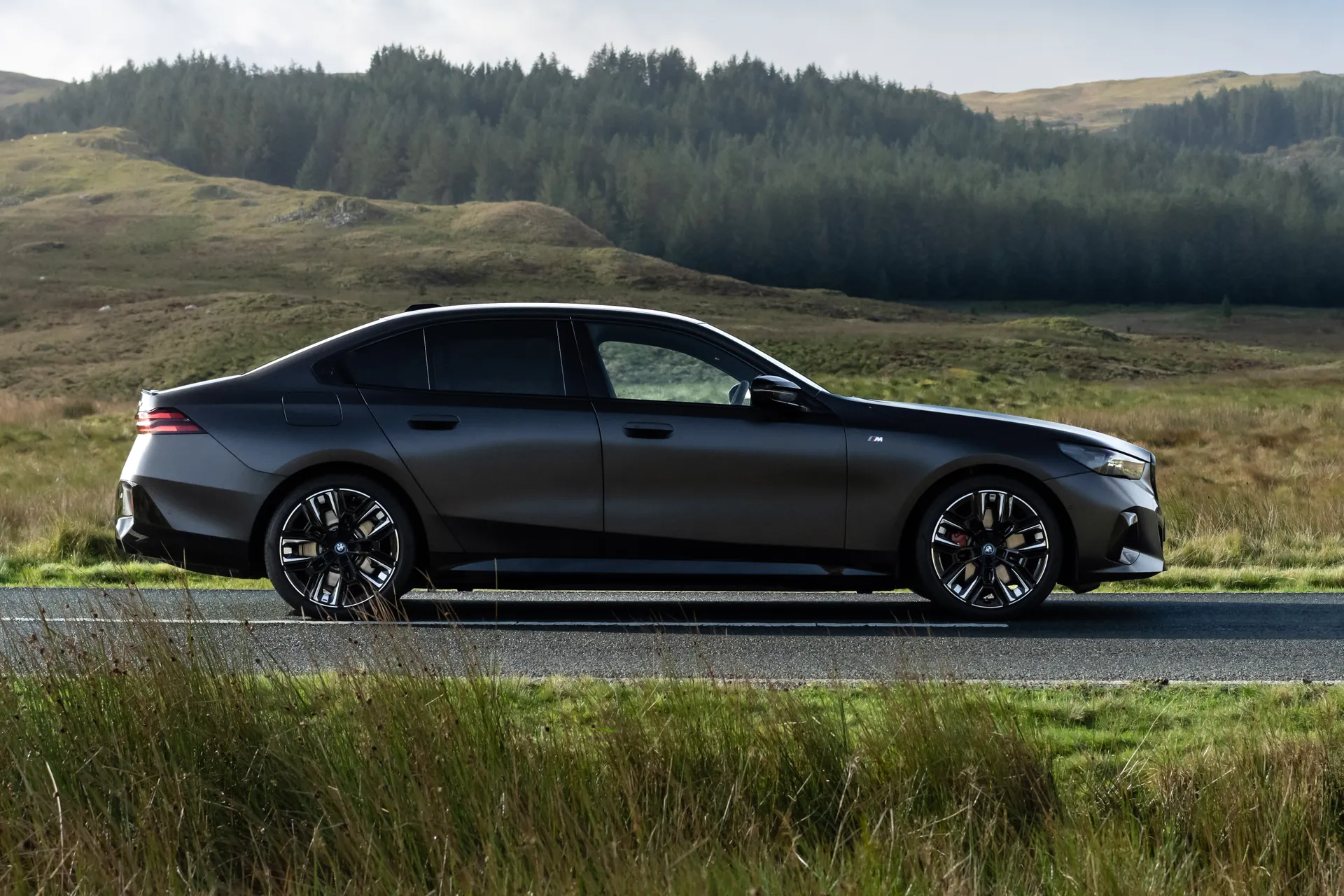
As charging speeds drop over time (now in a calculated curve, rather than stepped as per previous BMWs), it also means if you’re low on charge, you can add 100 miles in as little as ten minutes. On the i5 M60 xDrive, 22kW AC charging is also an option, for faster top-ups at home.
Charging costs vary but, at the current UK average fast charging cost of 74p/kWh, a 10-80% charge in an i5 will cost between £40-£45, and at 27p/kWh for home electricity, nearer £15, or down to around £6 on the cheapest night-time tariffs.
How reliable is a BMW i5?
The BMW i5's long-term reliability is difficult to judge at this early stage. BMWs tend to achieve middling results in reliability surveys. The brand’s first proper EV, the i3, had some teething troubles unique to its somewhat pioneering approach, but things steadily improved over time, to the point where in the latest 2023 Honest John Satisfaction Index, the i3 featured in the list of the top ten most reliable cars in the entire study. That's probably partly because electric power tends to mean fewer moving parts, lower maintenance costs, and fewer things to potentially go wrong.
Insurance groups and costs
Nice easy one, this. Go for the eDrive40 version, and your car will sit in insurance group 43 (of 50, with 50 being the most expensive) regardless of which trim level you specify it in. Go for the M60 xDrive, and it'll be group 49 for you. As easy as this may be to understand, it also means that all version of the i5 will be - somewhat unsurprisingly - very expensive to insure.
VED car tax: What is the annual road tax on a BMW i5?
VED or ‘road tax’ for zero-emission vehicles like the BMW i5 is currently free, so there’s no up-front tax payment when buying new, nor any subsequent payment, despite the i5 costing well over the £40,000 threshold that normally attracts a hefty surcharge. This is likely to change from 2025.
How much should you be paying for a used BMW i5?
"As a new car, the BMW i5 starts at around £68,000 for the eDrive40 Sport Edition (added in mid-2024), rising to about £74,000 for the M Sport version. Go for the M60, and you're looking at the thick end of £100,000."
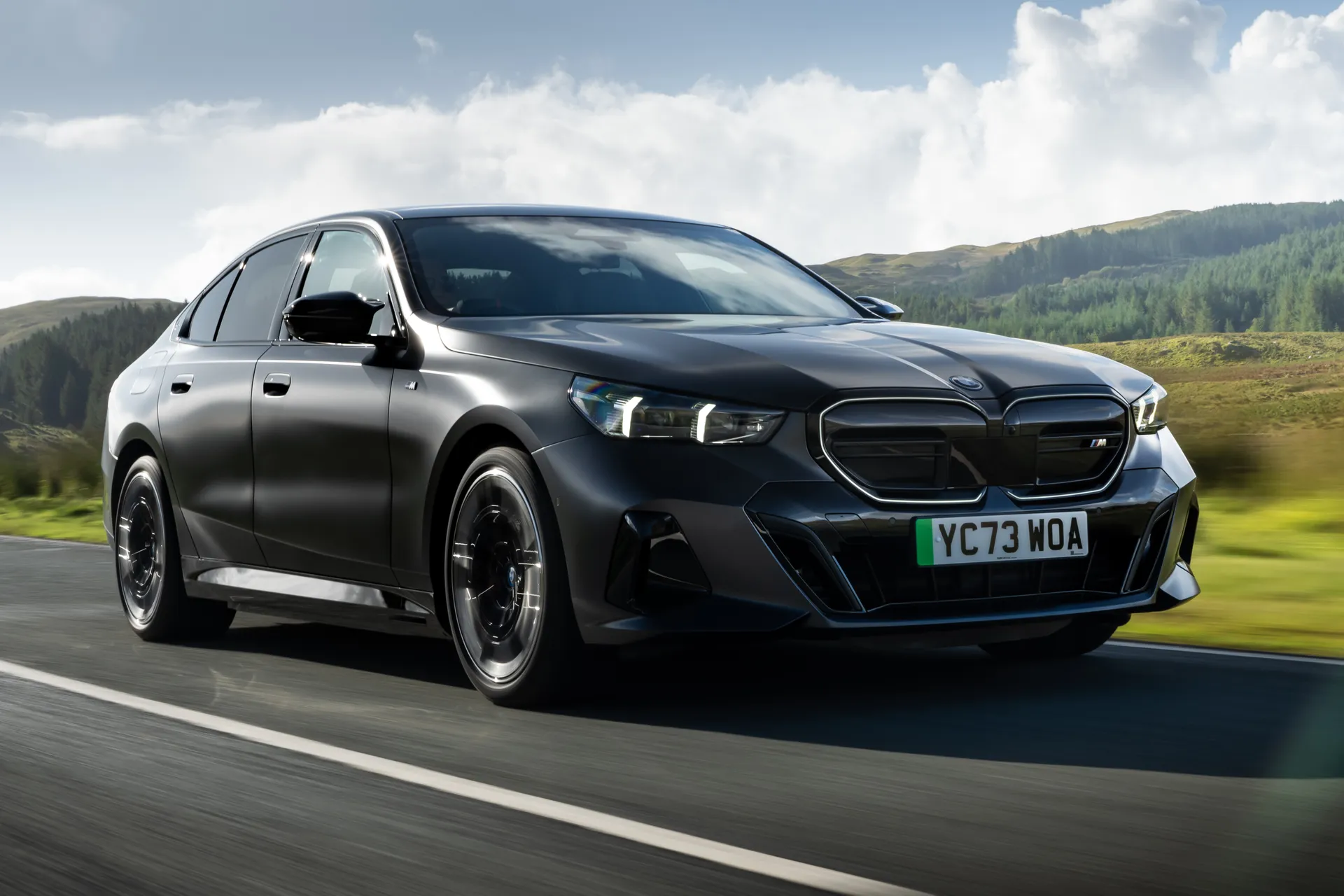
A quick browse of the heycar classifieds reveals that there are already decent savings to be made. Early eDrive40 M Sports are going for as little as £54,000, which represents a twenty grand saving compared to a brand new one, not bad for a year-old car with just 12,000 miles on the clock. Spend a couple of grand more and you'll cut that mileage in half. Either way, you'll swerve the waiting lists and get your car within days rather than months.
The cheapest M60 versions we saw (with similar age/mileage to those already stated) checked in at around the £75,000, so roughly what you'll pay for an all-new eDrive 40 M Sport. That also represents a saving of over £20,000.
Trim levels and standard equipment
Initially, the BMW i5 range opened with the i5 eDrive40 M Sport. Standard equipment for this includes Veganza artificial leather trim, a rear lip spoiler, ambient lighting, wireless phone charging, sports seats, air conditioning with pre-heating, Harman Kardon audio, M Sport suspension with rear self-levelling, 19-inch alloy wheels, parking and reverse assistants, BMW Live Cockpit Plus augmented reality for the satnav, smartphone integration.
Next up is M Sport Pro trim on the eDrive40, which gets BMW’s “Iconic Glow” grille design - a striking lit outline for the kidney grille - as well as black-tinted headlight housings, black exterior details, M seatbelts, and 20-inch alloy wheels as standard.
The i5 M60 xDrive comes with Iconic Glow as standard, over a dedicated M60 interpretation of the grille, a red centre marker for the steering wheel, Adaptive M Suspension Professional with Active Roll Stabilisation, Bowers & Wilkins audio, red brake calipers, optional 22kW AC charging, memory seats, and privacy glass.
Midway through 2024, a new entry-level trim was introduced called Sport Edition. You lose some of the M Sport's edgy styling, but to be fair, you don't lose too much in the way of luxury kit, so you shouldn't feel like you're slumming it. The more pivotal difference is the Sport Edition's suspension, which is softer than the M Sport's, which may improve the latter version's slightly brittle ride. We'll let you know if it does once we've tried it.
Ask the heycar experts: common questions
How much will a BMW i4 cost?
What is the range of a BMW i5?
Is the BMW i5 better than a Tesla?
Get our latest advice, news and offers
Keep me updated by email with the latest advice, news and offers from heycar.
By submitting you agree to our privacy policy
